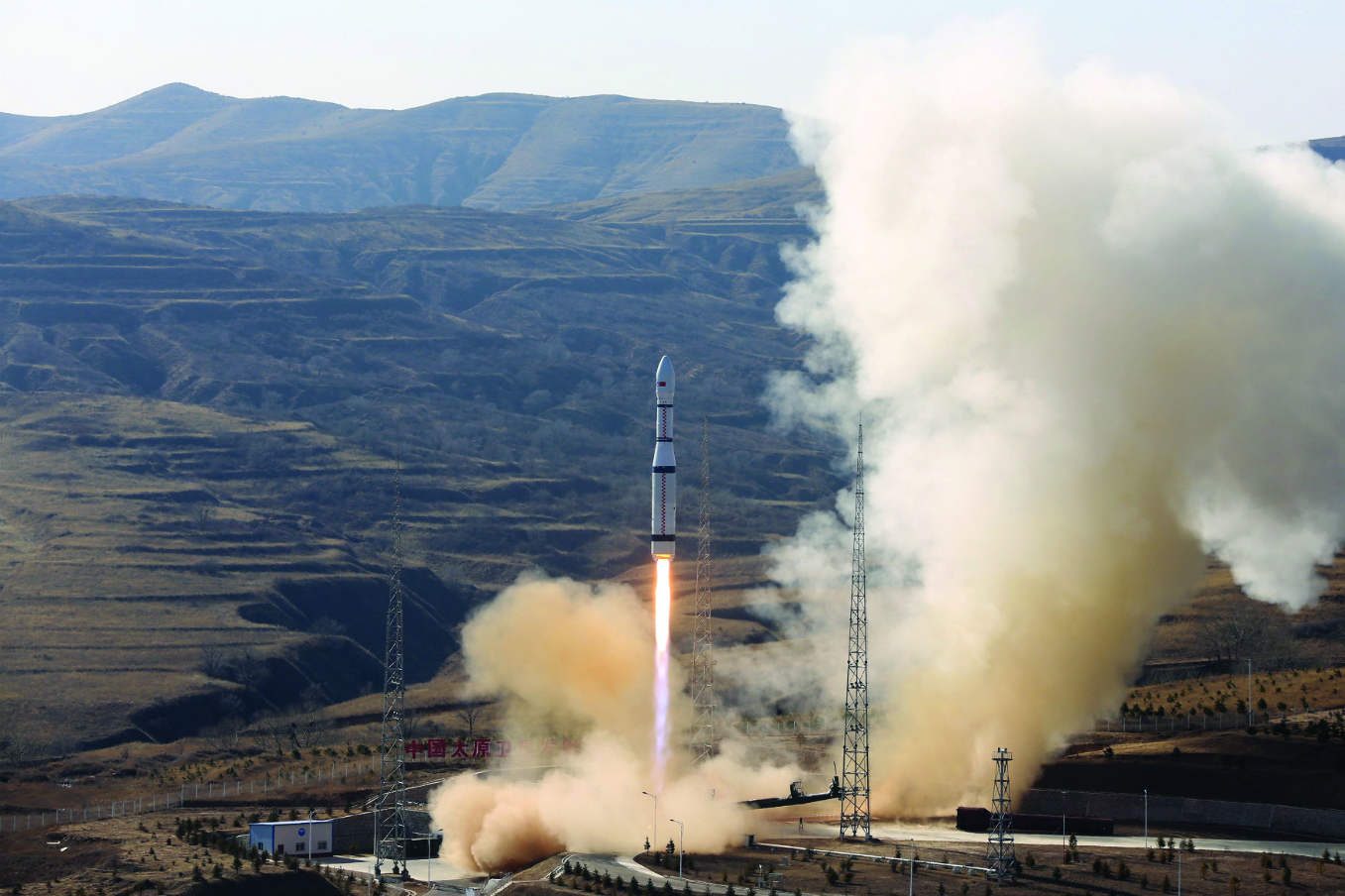China's new-generation Long March 6 light launcher made a successful second flight on 21st November carrying three Jilin 1 Earth observation satellites.
China's Long March 6 (CZ6) light launcher made a successful second flight on 21st November carrying three commercial Earth observation satellites. It was the 13th Chinese launch of the year — a total that includes 11 successful missions, one failure and one partial failure.
The CZ6 is one of three new launchers developed in parallel by the Shanghai Academy of Spaceflight Technology (SAST), a subsidiary of China Aerospace Science and Technology Corporation (CASC). The other two vehicles are the CZ7 medium launcher and the CZ5 heavy launcher.
The CZ6 is a new-generation two-stage vehicle fuelled by liquid oxygen and kerosene. It measures 29.24m in height, with a maximum diameter of 3.35m, and has a total mass at lift-off of 103t. The baseline version is designed to place payloads into low Earth orbit (up to 1,500kg) and 700km sun synchronous orbit (1,080kg). The launcher entered service on 19th September 2015.
The second mission targeted a 535km orbit inclined at 97.5°. The launch took place from the Taiyuan Satellite Launch Centre in the province of Shanxi in northern China. The site, which is dedicated to sun synchronous missions, had not been used between the failed launch of the GaoJing 1 01 and 02 Earth observation satellites in December 2016 and the recent launch of the FengYun 3 meteorological satellite on 14th November.
The 625kg, triple-satellite payload (Jilin 1 04, 05 and 06) forms part of China's first commercial Earth observation constellation, deployment of which started in October 2015, for privately owned Chang Guang Satellite Technology (CGST). This entity was created in December 2014 by Changchun Institute of Optics, Fine Mechanics and Physics (CIOMP), which is supervised by the Chinese Academy of Sciences (CAS). CGST is also developing the camera for the rover in China's Mars 2020 mission.
The three Jilin 1 satellites have a design life of three years. They will supply multispectral video with a resolution of 1.3m per pixel and a swath of 19km x 4.5km. Two other Jilin 1 satellites are scheduled for launch by the end of the year on another new-generation light launcher, the CZ11. The constellation is planned to comprise 60 satellites by 2020 (30-minute revisit capability), and will ultimately increase to 138 satellites (10-minute revisit).
A third CZ6 launch is expected in the near future, carrying the HaiYang 3 oceanographic satellite.

